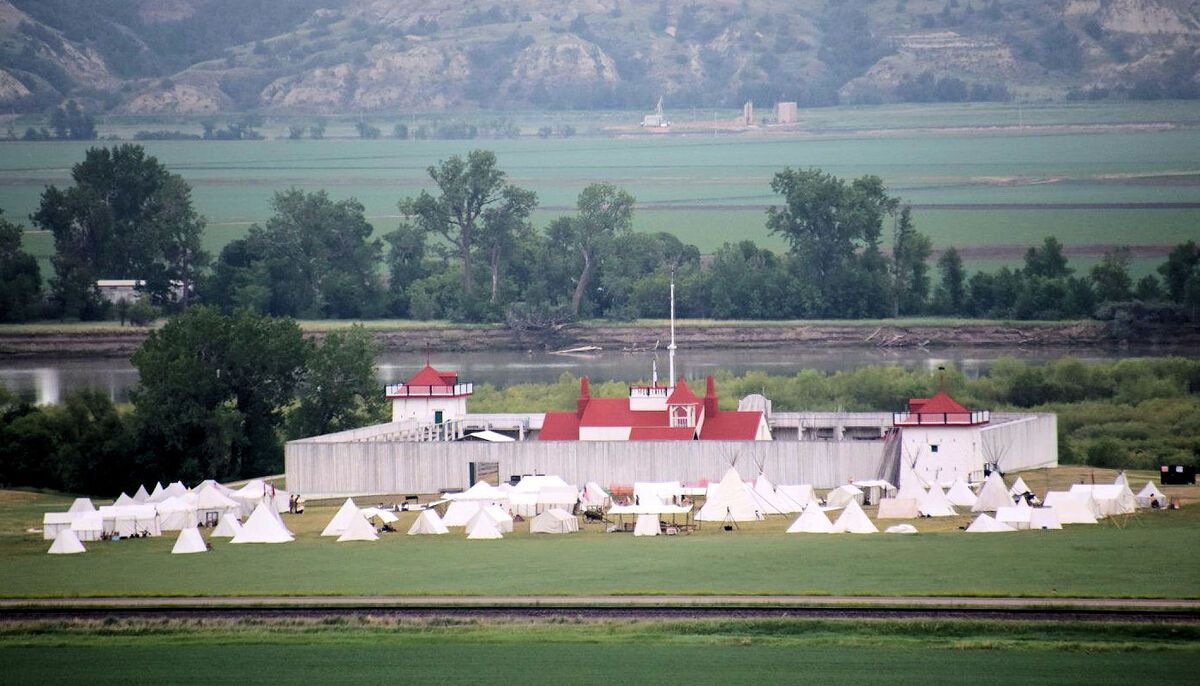Lost Fur Trading Posts Of Missouri River

Imagine stepping back in time to the days when fur trading posts dotted the banks of the Missouri River. These bustling hubs were once the lifeblood of commerce, where traders swapped pelts for goods and stories. Today, many of these historic sites have faded into obscurity, leaving behind whispers of their vibrant past. What happened to these once-thriving outposts? Why did they vanish, and what traces remain? This journey will take you through the history of these forgotten trading posts, uncovering the tales of adventure, survival, and cultural exchange that defined them. Whether you're a history buff or just curious about the past, this exploration of the lost fur trading posts along the Missouri River promises to be a captivating glimpse into a bygone era. Get ready to learn about the people, places, and events that shaped this fascinating chapter in American history.
The Forgotten History of Missouri River Fur Trading Posts
Long ago, the Missouri River was a bustling highway for fur traders. These traders established posts along the river, creating small communities that thrived on the fur trade. Today, many of these posts have faded into obscurity, but their stories remain fascinating. Let's journey back in time and uncover some of these lost fur trading posts.
1. Fort Lisa
Fort Lisa was a key player in the fur trade during the early 1800s. Established by Manuel Lisa, a prominent trader, this post was located near present-day Omaha, Nebraska. It served as a hub for traders and Native American tribes to exchange goods. Fort Lisa was known for its strategic location, which allowed traders to access the upper Missouri River easily.
2. Fort Atkinson
Fort Atkinson, located in what is now Nebraska, was one of the first U.S. military posts west of the Missouri River. Established in 1819, it played a crucial role in protecting traders and settlers. The fort was a bustling center of activity, with traders, soldiers, and Native Americans all interacting. Though the fort no longer stands, its legacy lives on in the stories of those who passed through its gates.
3. Fort Pierre Chouteau
Fort Pierre Chouteau, situated in present-day South Dakota, was a major trading post during the 1830s. Named after Pierre Chouteau Jr., a prominent fur trader, the fort was a key location for trading with the Lakota Sioux. It was known for its large stockade and bustling trade in buffalo robes. The fort's influence extended far beyond its walls, impacting the entire region's economy.
4. Fort Union
Fort Union, located near the confluence of the Missouri and Yellowstone Rivers, was one of the most important fur trading posts of its time. Established in 1828, it served as a major trading center for the American Fur Company. The fort was a melting pot of cultures, with traders, trappers, and Native American tribes all coming together to exchange goods. Today, the site is a national historic landmark, preserving the legacy of this once-thriving post.
5. Fort Benton
Fort Benton, in present-day Montana, was the last fur trading post established on the upper Missouri River. Founded in 1846, it became a vital link in the trade network, connecting the Missouri River to the Pacific Northwest. The fort was known for its bustling trade in beaver pelts and buffalo robes. Though the fur trade eventually declined, Fort Benton continued to thrive as a transportation hub, earning the nickname "The Birthplace of Montana."
6. Fort Clark
Fort Clark, located in what is now North Dakota, was a significant trading post during the early 1800s. Established by the American Fur Company, it was a key location for trading with the Mandan and Hidatsa tribes. The fort was known for its large stockade and bustling trade in furs and other goods. Though the fort no longer stands, its legacy lives on in the stories of those who passed through its gates.
7. Fort Berthold
Fort Berthold, also in North Dakota, was another important trading post along the Missouri River. Established in 1845, it served as a hub for traders and Native American tribes to exchange goods. The fort was known for its strategic location, which allowed traders to access the upper Missouri River easily. Though the fort no longer stands, its legacy lives on in the stories of those who passed through its gates.
Rediscovering History Along the Missouri River
The lost fur trading posts of the Missouri River offer a fascinating glimpse into the past. These sites were once bustling hubs of commerce and cultural exchange. Today, they stand as reminders of a time when fur was a valuable commodity, shaping the lives of many. Exploring these locations can provide a deeper understanding of the region's history and the people who lived there. From the traders and trappers to the Native American tribes, each played a crucial role in the story of the fur trade. Visiting these sites allows us to connect with this rich history and appreciate the challenges and triumphs of those who came before us. Whether you're a history buff or just curious, the journey along the Missouri River to uncover these hidden gems is a rewarding experience, bringing history to life in a unique and meaningful way.

